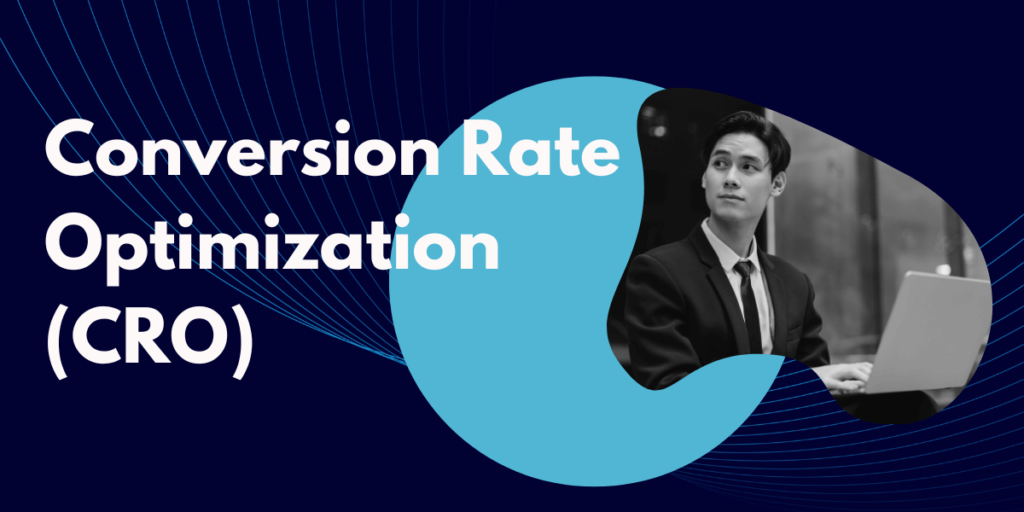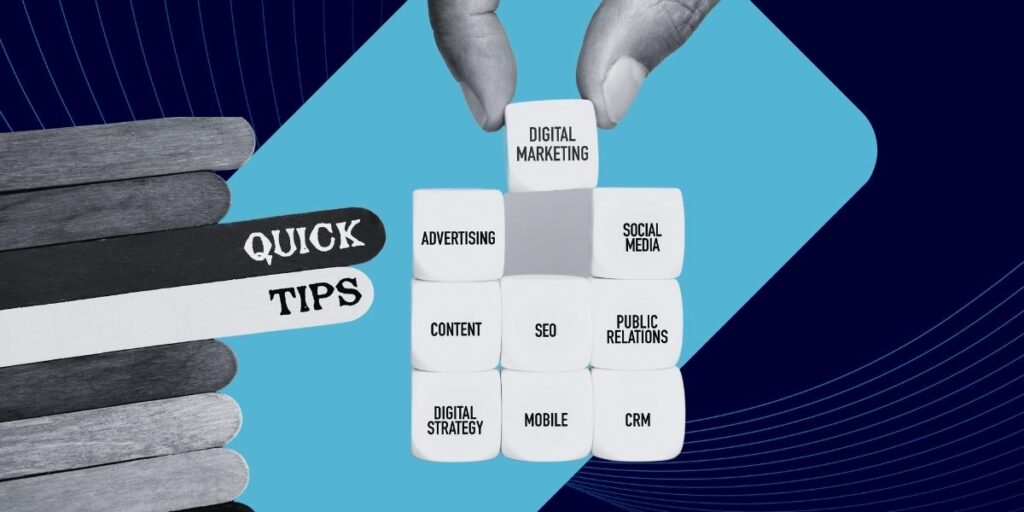Hey there, digital business owners! Are you looking to boost your online business growth and increase your conversions? Well, you’ve come to the right place where we will discuss conversion rate optimization.
In this ultimate guide to conversion rate optimization (CRO), we’ll dive into what CRO is all about, how it can help you drive more desired actions from your website visitors, and why it should be an essential part of your marketing strategy.
So, grab a cup of coffee and get ready to learn all about this systematic process that can take your online business to new heights. Let’s get started!
What is Conversion Rate Optimization?
Conversion Rate Optimization (CRO) is the systematic process of improving the percentage of website visitors who take a desired action, such as making a purchase, filling out a form, or subscribing to a newsletter. The goal of CRO is to increase conversions and ultimately drive business growth.
CRO involves analyzing user behavior, conducting experiments, and making data-driven changes to your website in order to optimize its performance. By understanding how your visitors interact with your site and making strategic improvements, you can create a seamless user experience that encourages more conversions.
CRO Definition
Understanding the concept of CRO involves analyzing data to improve conversions and drive desired actions. Key elements in CRO include A/B testing and data analysis to identify areas for improvement. Unlike other optimization strategies, CRO focuses specifically on increasing conversion rates by filling gaps in the customer journey.
Why is CRO Important for Online Business Growth?
Maximizing conversion rates is key to increasing revenue and driving online business growth. Through A/B testing, data analysis, and understanding user behavior, marketers can optimize their websites or landing pages to encourage visitors to take the desired action. By filling gaps in the customer journey and enhancing user experience, businesses can build customer loyalty and increase conversions.
In today’s digital market, staying ahead of competitors is crucial. Conversion rate optimization allows businesses to identify areas for improvement and make data-driven decisions that will set them apart from their rivals. By continuously analyzing metrics and making adjustments based on consumer behavior trends, companies can stay one step ahead in the ever-evolving online landscape.
To get quality traffic to your websites, and signups, you need to ensure that those visitors are taking the actions that lead to business growth. That’s where CRO comes in.
By optimizing your website for conversions, you can:
- Increase Revenue: When more visitors convert into customers, your revenue naturally increases. CRO allows you to maximize the value you get from every visitor to your site.
- Improve ROI: CRO helps you make the most of your marketing budget by increasing the effectiveness of your campaigns. By focusing on converting the traffic you already have, you can achieve a higher return on investment.
- Enhance User Experience: Through CRO, you can identify and remove any friction points or barriers that may be preventing visitors from converting. By providing a seamless and enjoyable user experience, you can build trust and loyalty with your audience.
- Gain Competitive Advantage: Using CRO techniques, you can gain a competitive edge over your competitors, and help your business grow more than your competition.
Goals of Conversion Rate Optimization
Increasing website conversions and sales is a key goal of Conversion Rate Optimization (CRO). By analyzing data and conducting A/B testing, digital marketers can identify areas for improvement and make strategic changes to their websites. This includes optimizing landing pages to guide visitors toward the desired action, such as making a purchase or filling out a form.
Another important goal of CRO is improving lead generation and customer acquisition. By understanding user behavior through data analysis, marketers can identify ways to enhance the user experience and increase conversion rates. This may involve adjusting the page layout, creating compelling call-to-action buttons, or streamlining the checkout process.
Optimizing landing pages for better performance is also crucial in CRO. Marketers aim to create highly relevant and engaging landing pages that encourage visitors to take action. Through continuous monitoring, testing, and refinement of these pages, businesses can maximize their conversion rates and achieve higher overall success in online marketing efforts.
What strategies can I use to improve my website’s conversion rate?

Hey there! If you’re looking to improve your website’s conversion rate, you’ve come to the right place. Conversion rate optimization (CRO) is all about getting more of your website visitors to take the desired action, whether that’s making a purchase, signing up for a newsletter, or filling out a form. So, let’s dive into some strategies that can help you boost your conversion rates and ultimately grow your online business.
- Clearly define your goals: Before you start optimizing, it’s important to have a clear understanding of what you want your visitors to do on your website. Identify your primary conversion goals and make sure they align with your overall business objectives.
- Know your audience: Understanding your target audience is crucial for an effective CRO. Dig deep into their needs, preferences, and pain points. This knowledge will help you create a persuasive user experience that resonates with your visitors.
- Optimize your website’s design: A visually appealing and user-friendly website is key to keeping your visitors engaged. Simplify your navigation, use clear calls to action, and make sure your website is mobile-friendly. Eliminate any distractions that may lead visitors away from your conversion goals.
- Write compelling copy: Your website copy should speak directly to your visitors and clearly communicate the value they’ll get from taking the desired action. Use persuasive language, highlight benefits, and address any objections or concerns they may have.
- Use A/B testing: A/B testing allows you to compare two (or more) versions of a webpage to see which one performs better in terms of conversions. Test different elements such as headlines, images, buttons, and layouts to find the most effective combination that encourages visitors to take action.
- Analyze and optimize your website’s data: Data is your best friend when it comes to CRO. Use tools like Google Analytics to track user behavior, identify drop-off points, and understand what’s working and what’s not. Make data-driven decisions to continuously optimize your website and improve your conversion rates.
- Personalize the user experience: Tailoring your website to individual visitors can greatly increase your conversion rates. Use data and segmentation to show relevant content, product recommendations, and personalized offers based on each visitor’s preferences and past interactions.
- Build trust and credibility: Trust is crucial for conversions. Display customer testimonials, trust badges, and security seals to reassure your visitors that their information is safe and that your business is trustworthy. Provide clear and transparent policies, such as a return policy or privacy policy, to build further confidence.
- Optimize your landing pages: Landing pages are often the first interaction a visitor has with your website. Make sure they are optimized for conversions by removing any distractions, keeping the messaging consistent with your ads or campaigns, and using persuasive elements like social proof or urgency.
- Continuously test and iterate: Conversion rate optimization is an ongoing process. Test different strategies, monitor results, and iterate based on data and insights.
Why Conversion Rate Optimization is Crucial for Online Business Growth?
Conversion rate optimization (CRO) is crucial for online business growth because it directly impacts revenue and profits. By identifying and improving areas of your website or marketing campaigns that are underperforming, you can increase conversions and ultimately boost sales. CRO allows digital marketers to optimize their strategies, ensuring they get the most out of their advertising budgets while maximizing return on investment.
In addition to driving revenue, conversion rate optimization plays a vital role in customer acquisition. By understanding how visitors behave on your site and making data-driven changes, you can create a seamless user journey that encourages them to take action. This not only increases the number of customers acquired but also improves overall lead quality, leading to higher conversion rates and increased customer lifetime value.
By investing in conversion rate optimization techniques, businesses can enhance user experience and satisfaction levels. A well-optimized website with clear navigation paths, compelling content, and intuitive design makes it easier for users to find what they’re looking for and complete desired actions such as making a purchase or filling out a form. When customers have positive experiences interacting with your brand online, they are more likely to become loyal advocates who refer others to your business.
1. Increasing Revenue and Profits
Optimizing the checkout process is key to increasing conversions and driving revenue. By streamlining and simplifying the steps, customers are more likely to complete their purchase without any obstacles or hesitation. Implementing upselling and cross-selling strategies can also significantly boost profits by recommending relevant products or upgrades during the buying process.
Lastly, leveraging data analytics allows marketers to identify high-value customer segments, enabling personalized marketing campaigns that resonate with specific audiences. This targeted approach maximizes profitability by catering to the needs and preferences of valuable customers.
2. Improving Customer Acquisition
Creating compelling landing pages is essential for driving conversions. By optimizing the design, layout, and content of your landing page, you can capture visitors’ attention and encourage them to take action. A/B testing different call-to-action buttons is another effective strategy to improve click-through rates.
Experimenting with various button designs and text can help you identify the most persuasive option for your audience. Lastly, personalizing content based on user behavior and demographics can significantly increase engagement. Tailoring your messaging to individual preferences creates a more personalized experience that resonates with potential customers.
3. Enhancing User Experience and Satisfaction
Reducing website loading time is crucial for an enhanced user experience. Slow-loading websites frustrate users and lead to high bounce rates. By optimizing the website’s performance, businesses can ensure a seamless browsing experience that keeps users engaged and increases the likelihood of conversions.
Implementing responsive design is essential to cater to mobile users. With more people accessing websites through their smartphones and tablets, it is imperative to provide a user-friendly interface across all devices. Responsive design allows the website layout and content to adapt seamlessly, ensuring that mobile users have a positive experience and are more likely to convert.
Gathering feedback through surveys and usability testing helps businesses understand their users’ needs better. By directly engaging with customers, marketers gain valuable insights into pain points, preferences, and areas for improvement. This data-driven approach allows businesses to make informed decisions when enhancing user experience, ultimately increasing satisfaction levels and driving online business growth.
Key Steps in Conversion Rate Optimization
Let us know talk about some of the key steps you need to take to get hands-on conversion rate optimization (CRO).
1. Data Analysis and Insights:
To start optimizing your conversion rate, you need to dive into the data. Analyze user behavior patterns, identify trends, and gain insights into what is working and what isn’t. Look for areas where users are dropping off or experiencing obstacles in their journey toward a conversion.
2. Identifying Conversion Bottlenecks:
Once you have gathered your data, pinpoint the specific bottlenecks that are hindering conversions. Is it a confusing checkout process? Slow website loading speed? Unclear call-to-action buttons? By identifying these roadblocks, you can focus on addressing them directly and improving the overall user experience.
3. Creating and Testing Hypotheses:
With your bottlenecks identified, it’s time to create hypotheses about how to resolve them. Develop strategies aimed at removing barriers or enhancing elements of your website or landing pages that could lead to higher conversion rates. Test these hypotheses through A/B testing to determine which changes have the most significant impact on driving conversions.
4. Implementing and Analyzing A/B Tests:
Once you’ve generated hypotheses for improvement, implement A/B tests by creating two versions of a webpage with one variable changed between them (such as color scheme or placement of elements). Monitor how each version performs using analytical tools like Google Analytics. Compare results and determine which variation drives higher conversion rates – this will help inform future optimization efforts.
5. Data Analysis and Insights
Setting up proper analytics tracking is essential for effective conversion rate optimization. By accurately collecting and analyzing user behavior data, marketers can gain valuable insights into how their audience interacts with their website. This enables them to identify key performance indicators (KPIs) that measure the success of their CRO efforts. With this data-driven approach, businesses can make informed decisions to optimize their conversion rates and drive online business growth.
In order to improve conversion rates, it’s crucial to understand user behavior through data analysis. Collecting and analyzing user behavior data allows marketers to uncover patterns, preferences, and pain points that may be hindering conversions. By identifying these insights, businesses can then take targeted actions to address the specific needs of their audience and remove any obstacles in the conversion process.
To effectively optimize conversions, it’s important to establish key performance indicators (KPIs). These metrics serve as benchmarks for measuring success and progress toward your CRO goals. Whether it’s increasing click-through rates or reducing cart abandonment rates, defining KPIs helps track improvements over time and guides decision-making in optimizing your website for maximum conversions.
By setting up proper analytics tracking systems, and collecting and analyzing user behavior data comprehensively while focusing on key performance indicators (KPIs), digital marketers can gain valuable insights that will inform targeted strategies aiming at improving conversion rates effectively leading towards online business growth.
6. Identifying Conversion Bottlenecks
- Conducting website usability audits
- Analyzing user drop-off points in the conversion funnel
- Utilizing ‘heat mapping’ to understand user engagement
To ensure optimal conversion rates and drive online business growth, it is crucial to identify and address any bottlenecks that may hinder the conversion process. One effective approach is conducting website usability audits, which involve evaluating the overall user experience and identifying areas for improvement. Additionally, analyzing user drop-off points in the conversion funnel can help pinpoint specific stages where users are most likely to abandon their journey toward a desired action.
Furthermore, utilizing heat-mapping techniques provides valuable insights into user engagement by visually representing where users are spending their time on a webpage. By focusing on these key areas of analysis, marketers can optimize conversions and maximize business growth potential.
7. Qualitative Research and Asking for Feedback
Performing qualitative research, such as surveys and interviews, is an important step in creating and testing hypotheses for conversion rate optimization. These methods allow you to gather valuable insights from your target audience and understand their preferences and pain points. Additionally, using click-tracking can help identify areas of low interaction on your website, indicating potential areas for improvement. Lastly, conducting user testing is crucial to gather feedback on potential enhancements or changes to your website that can lead to increased conversions.
- Surveys: Gather information directly from your target audience through carefully crafted questionnaires.
- Interviews: Conduct one-on-one conversations with users to gain a deeper understanding of their needs and motivations.
- Click-tracking: Use tools like heatmaps and session recordings to track user interactions on your website.
- User testing: Recruit participants who fit your target audience profile to test the usability of your website features.
Best Practices for Conversion Rate Optimization
Optimize Website Speed and Performance: Having a fast and smooth website is crucial for improving conversion rates. Slow loading times can lead to high bounce rates and potential customers abandoning their purchase journey. Ensure that your website is optimized by compressing images, minimizing HTTP requests, and using caching techniques.
1. Simplify and Streamline User Journey:
Make it easy for users to navigate through your website and find what they are looking for. Reduce the number of steps required to complete a purchase or sign-up process. Use clear, concise language in your content, provide helpful product descriptions, and eliminate any unnecessary distractions that may divert attention away from the main goal.
2. Use Compelling Call-to-Actions (CTAs):
Persuade users to take action with compelling CTAs that stand out on your web pages. Use strong verbs such as “Get Started Now” or “Claim Your Free Trial” to create a sense of urgency. Experiment with different placements, colors, sizes, and wording of CTAs to find what works best for your audience.
3. Leverage Social Proof and Testimonials:
Build trust with potential customers by showcasing social proof in the form of customer testimonials or reviews. Display positive feedback prominently on your website’s landing pages or product pages. Include real names or photos whenever possible to add credibility.
4. Optimize Website Speed and Performance
Implementing caching techniques can significantly reduce load times, ensuring that your website loads quickly and efficiently. By storing frequently accessed data locally, the need to fetch information from the server is minimized, resulting in faster page loading.
Compressing images is another effective way to improve website speed. By reducing the file size of images without compromising their quality, you can ensure that your pages load quickly even with high-resolution visuals.
To further optimize your website’s performance, it’s essential to minify CSS and JavaScript files. Removing unnecessary characters and whitespace from these files helps streamline their delivery to visitors’ browsers, enhancing overall page loading speed.
5. Simplify and Streamline User Journey
Remove unnecessary form fields to minimize friction, ensuring a smooth and hassle-free user experience. Use clear and intuitive navigation menus that make it easy for users to find what they’re looking for quickly. Optimize the mobile experience for seamless browsing, making sure your website is responsive and user-friendly on all devices.
- Minimize friction by removing unnecessary form fields
- Utilize clear and intuitive navigation menus
- Ensure a seamless browsing experience on mobile devices
6. Use Compelling Call-to-Actions (CTAs)
Craft persuasive copy that urges action. When creating your CTAs, use compelling and persuasive language that motivates users to take the desired action. Focus on the benefits they will receive by clicking on the CTA, and make it clear what they need to do next.
Use contrasting colors to make CTAs stand out. To grab users’ attention, choose colors for your buttons or links that contrast with the rest of your website’s design. This will help make them more noticeable and encourage clicks.
Experiment with different button placements. Don’t be afraid to test different positions for your CTAs within your web pages. Try placing them in prominent areas such as above-the-fold sections or at the end of engaging content to see which placement generates higher conversions.
By implementing these strategies, you can optimize your conversion rate and drive online business growth through effective call-to-actions (CTAs).
7. Leverage Social Proof and Testimonials
Display customer reviews prominently on your website to build trust and credibility with potential customers. Incorporate trust badges or security seals to provide reassurance about the safety of their information and transactions. Utilize case studies showcasing successful results to demonstrate the value and effectiveness of your products or services.
- Display customer reviews prominently
- Incorporate trust badges or security seals
- Utilize case studies showcasing successful results
Tools and Resources for Conversion Rate Optimization
Let’s now talk about some of the tools that are used in doing conversion rate optimization (CRO):
1. Heatmaps and Click Tracking
Heatmap tools like Crazy Egg and Hotjar provide valuable insights into how users engage with your website. By visually representing user behavior, you can identify areas of high engagement or drop-off, allowing you to optimize your website accordingly.
Scroll depth tracking, mouse movement heatmaps, and click heatmaps are powerful tools for conversion rate optimization. Scroll depth tracking allows you to analyze how far users scroll down a page, helping you identify where they lose interest.
Mouse movement heatmaps provide valuable insights into user behavior by visually representing the areas of the page that receive the most attention. Click heatmaps show you which elements on your website are getting clicked on the most, enabling you to optimize your design and placement for maximum impact.
By utilizing these heatmap and click-tracking tools, digital marketers can make data-driven decisions to enhance user experience and drive higher conversion rates.
2. A/B Testing Tools
Tools like Optimizely and VWO enable you to test different variations of your web pages to determine which one produces the highest conversion rate. This data-driven approach helps you make informed decisions about layout, design, copywriting, and more. Here are some types of tests you can do using such tools:
- Multivariate testing: Test multiple variations of different elements on a webpage to determine the most effective combination.
- Split URL testing: Compare two or more versions of a webpage by splitting traffic between them, allowing for accurate data comparison.
- Conversion goal tracking: Set specific goals for user actions, such as completing a purchase or signing up for a newsletter, and track the conversion rates to measure success.
3. User Feedback and Survey Tools
Gathering feedback from your users is essential for understanding their needs and preferences. Utilize tools such as Qualaroo or SurveyMonkey to collect direct feedback through surveys or pop-up questionnaires on specific pages.
On-site feedback widgets allow you to collect valuable insights directly from your website visitors. These unobtrusive pop-ups or chat boxes prompt users to provide instant feedback, helping you understand their needs and pain points in real time.
Exit intent surveys are an effective way to capture user opinions when they’re about to leave your site. By displaying a targeted survey just as the user is about to exit, you can gather valuable feedback on why they didn’t convert or if there were any issues with their experience.
Net Promoter Score (NPS) surveys measure customer loyalty by asking how likely someone is to recommend your brand. By regularly conducting NPS surveys, you can gauge overall customer satisfaction and identify areas for improvement that will drive online business growth.
4. Google Analytics and Data Analytics Platforms
Utilize Google Analytics along with other data analytics platforms such as Kissmetrics or Mixpanel to track key metrics like bounce rate, time on page, click-through rates (CTRs), conversions, etc. These platforms offer in-depth analysis enabling you to uncover actionable insights for optimizing conversion rates.
Goal conversion tracking is a crucial feature of Google Analytics and other data analytics platforms. It allows digital marketers to track and measure the success of specific goals, such as newsletter sign-ups or purchases, helping them understand which strategies are driving conversions.
E-commerce analytics integration is another valuable aspect of these platforms. By integrating e-commerce data with their analytics tools, marketers gain insights into customer behavior, sales trends, and product performance. This information enables them to optimize their online stores and marketing campaigns for better results.
Segmentation analysis is a powerful technique offered by Google Analytics and similar platforms. Marketers can segment their audience based on various criteria like demographics, interests, or behavior patterns. This level of granularity helps tailor marketing messages and experiences to different segments for improved engagement and conversion rates.
As it turns out:
By utilizing heatmaps/click tracking tools, A/B testing tools, user feedback/survey tools, and data analytics platforms, you can gain valuable insights into user behavior, navigate their preferences, optimize web pages, and ultimately drive higher conversion rates. The right combination of these resources will help digital marketers boost online visibility and business growth effectively!
We have highlighted some of the best practices that can be used in CRO, and help you get better results from your website or landing pages. Let us know in the comments below what is your favorite conversion optimization technique, and how it has helped in generating more revenue for your business.
More Readings For You:





